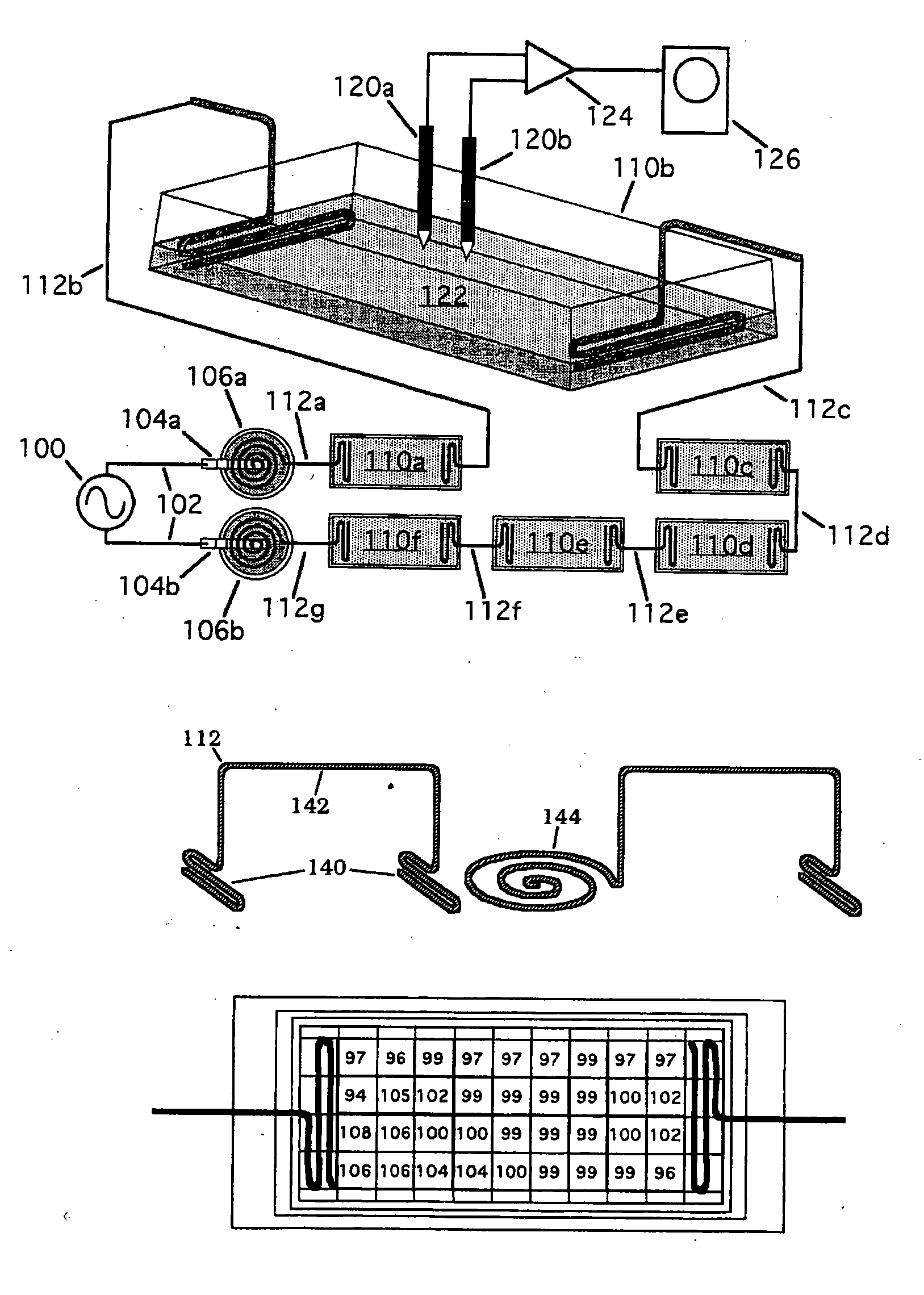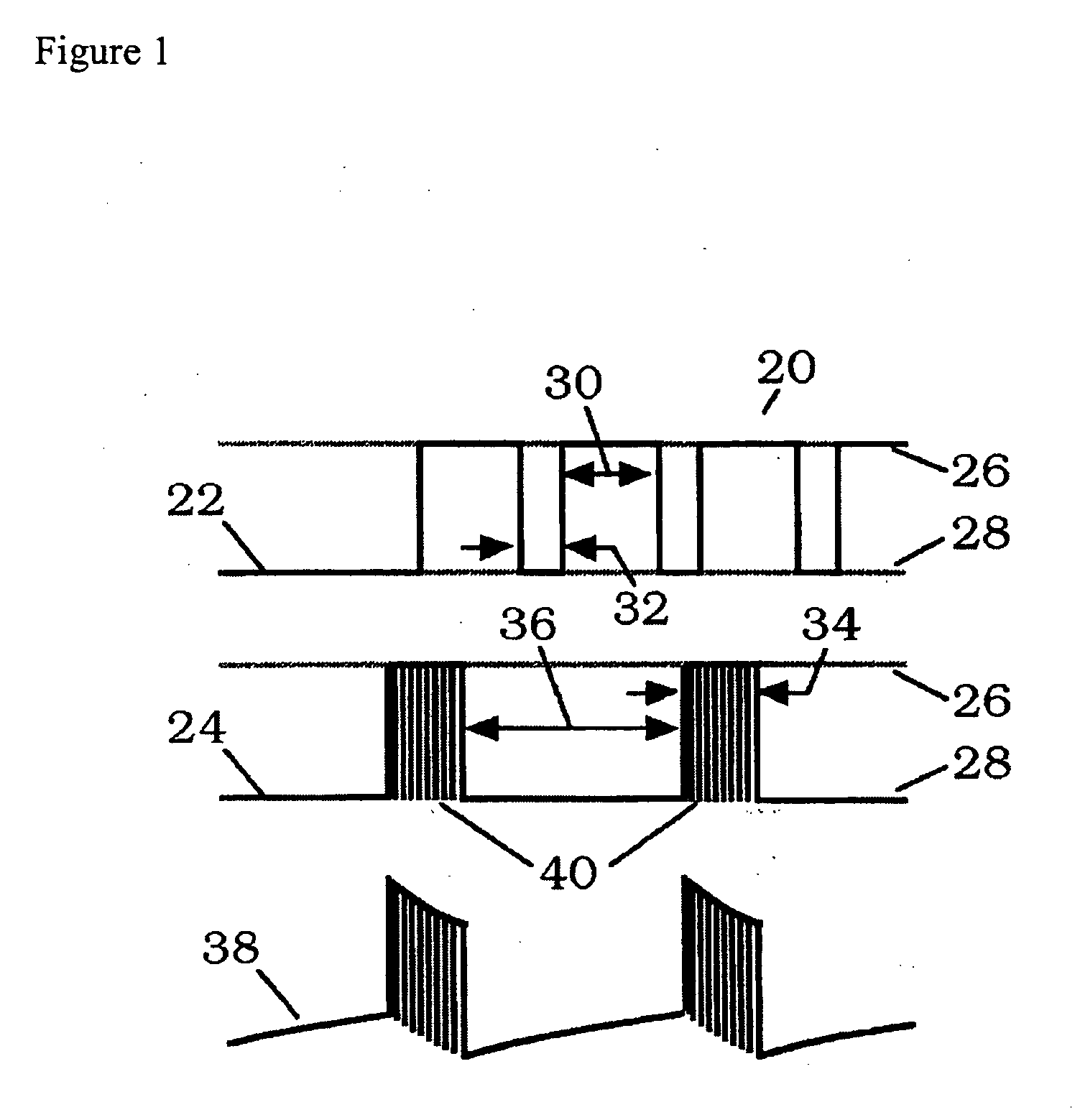Methods for modulating osteochondral development using bioelectrical stimulation
a bioelectric stimulation and osteochondral technology, applied in biochemical equipment and processes, specific use bioreactors/fermenters, therapy, etc., can solve the problems of total knee joint replacement, loss of productivity and independence, and deterioration of joint cartilage, so as to maximize the utility and application of desired pemf waveforms, optimize osteoblast development, and improve bone mass
- Summary
- Abstract
- Description
- Claims
- Application Information
AI Technical Summary
Benefits of technology
Problems solved by technology
Method used
Image
Examples
example 1
Effect of PEMF Signal Configuration on Mineralization and Morphology in a Primary Osteoblast Culture
[0127] The goal of this study was to compare two PEMF waveform configurations delivered with capacitative coupling by evaluating biochemical and morphologic variations in a primary bone cell culture.
Methods
[0128] Osteoblast cell culture: Primary human osteoblasts (CAMBREX®, Walkersville, Md.) were expanded to 75% confluence, and plated at a density of 50,000 cells / ml directly into the LAB-TEK™ (NALGE NUNC INTERNATIONAL™, Rochester, N.Y.) chambers described previously. Cultures were supported initially with basic osteoblast media without differentiation factors. When the cultures reached 70% confluence within the chambers, media was supplemented with hydrocortisone-21-hemisuccinate (200 mM final concentration), β-glycerophosphate (10 mM final concentration), and ascorbic acid. Osteoblasts were incubated in humidified air at 37° C., 5% CO2, 95% air for up 21 days. Media was changed ...
example 2
Use of a Niobium “Salt” Bridge for In Vitro PEMF Stimulation
Introduction
[0141] A passive electrode system using anodized niobium wire was developed to couple time-varying electric signals into culture chambers. The intent of the design was to reduce complexity and improve reproducibility by replacing conventional electrolyte bridge technology for delivery of PEMF-type signals, such as those induced in tissue by the EBI repetitive pulse burst bone grown stimulator, capacitively rather than inductively, in vitro for cellular, tissue studies. Anodized niobium wire is readily available and requires only simple hand tools to form the electrode bridge. At usable frequencies, typically between 5 Hz and 3 MHz, DC current passage is negligible.
Background
[0142] Capacitively-coupled electric fields have typically been introduced to culture media with conventional electrolyte salt bridges which have limited frequency response and are difficult to use without risk of contamination for exte...
example 3
Stimulation of Cartilage Cells Using a Capactively Coupled PEMF Signal
Introduction
[0147] A PEMF signal similar to that used clinically for bone repair is currently being tested for its ability to reduce pain in joints of arthritic patients. Of interest is whether this pain relief signal can also improve the underlying problem of impaired cartilage.
Background
[0148] Compared to drug therapies and biologics, PEMF based therapeutics offer a treatment that is easy to use, non-invasive, involves no foreign agent with potential side effects, and has zero clearance time. Issues with PEMF therapeutics include identifying responsive cells, elucidating a physical transduction site on a cell, and determining the biological mechanism of action that results in a cell response. The purpose of this study was to determine whether a specific PEMF signal currently being tested for pain relief (MEDRELIEF®, Healthonics, Inc, Ga.) could stimulate cartilage cells in vitro and whether a biological me...
PUM
 Login to View More
Login to View More Abstract
Description
Claims
Application Information
 Login to View More
Login to View More - R&D
- Intellectual Property
- Life Sciences
- Materials
- Tech Scout
- Unparalleled Data Quality
- Higher Quality Content
- 60% Fewer Hallucinations
Browse by: Latest US Patents, China's latest patents, Technical Efficacy Thesaurus, Application Domain, Technology Topic, Popular Technical Reports.
© 2025 PatSnap. All rights reserved.Legal|Privacy policy|Modern Slavery Act Transparency Statement|Sitemap|About US| Contact US: help@patsnap.com



